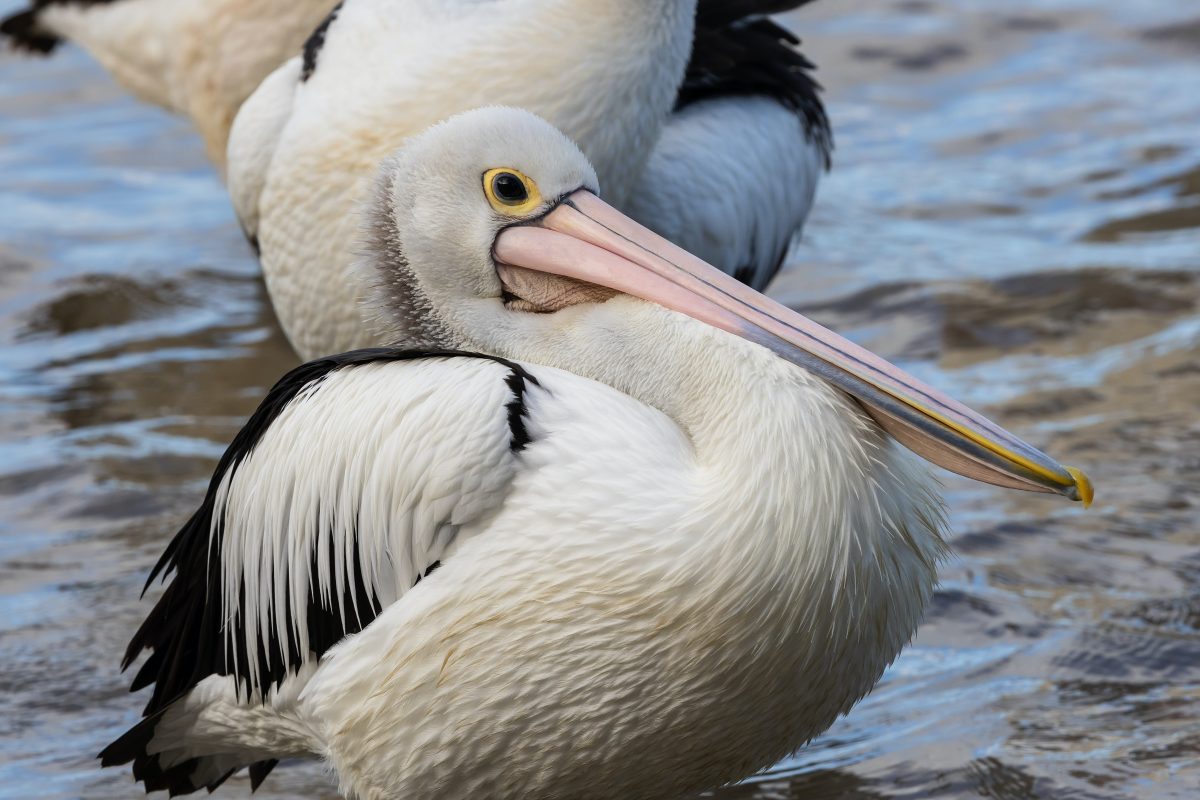
Murrumbidgee residents have been asked to keep an eye out for pelicans fitted with a blue band. Photo: File.
Birdwatchers – and others – across the Murrumbidgee are being asked to keep their eyes peeled for nearly 400 pelicans from the Gayini Wetlands in the Lowbidgee floodplain region, which are sporting blue leg bands as part of a study into their movement and breeding patterns.
It is just the second time pelicans from the Gayini colony have been banded as part of a wider project aiming to understand where young pelicans go when they fledge and disperse, and whether they return to breed in the same wetland they were born in.
The study started at Lake Brewster in 2017 and is a partnership between the State Government’s Department of Planning and Environment, the University of New South Wales, WaterNSW and the Lake Cowal Foundation.
Gayini Wetlands was added as a study site last year, when 49 young pelicans from a large colony were banded with individually numbered blue bands.
This year, 394 pelicans were banded at the wetlands, which are in the Lower Murrumbidgee and managed by the Nari Nari Tribal Council.
The tribal council also in February secured a historic agreement with the NSW Biodiversity Conservation Trust for the permanent protection and sustainable management of more than 55,000 hectares of land at the wetlands under the council’s ownership and stewardship.
Murrumbidgee senior environmental water management officer James Maguire said data about where the pelicans went, and importantly, where they bred, could help determine how water for the environment was used to support waterbirds in the catchment and other areas across the Murray-Darling Basin.
He said the information gathered could help ensure the right amount of water was supplied to the wetland for the right amount of time to support breeding, ensure there was enough foraging habitat in neighbouring wetlands, and help protect adult pelicans and their chicks from land-based predators.
“We’re asking members of the public to keep an eye out for pelicans wearing a distinctive blue leg band and help us understand more about the movements and breeding behaviour of this iconic Australian waterbird,” Mr Maguire said.
The department is asking the public to email: [email protected] if they see a pelican with a coloured leg band, with information including: the date, time and location of the sighting; a photograph of the bird if possible; the band colour; and the number on the band.
Other information the department would like reported includes: whether the bird was alone or in a group; its behaviour, such as whether it was feeding or flying; its condition (whether it looked healthy, unwell or was dead); and if people find a band but no bird, the department would also like to know.
As part of the project, the study team uses orange leg bands for young pelicans at Lake Brewster, black bands for those tagged at Narran Lake and blue bands for young pelicans in the Gayini Wetlands.
Staff can also pass on information to fellow researchers in Victoria who use red leg bands for pelicans in Gippsland Lakes and green leg bands in Westernport Bay.








